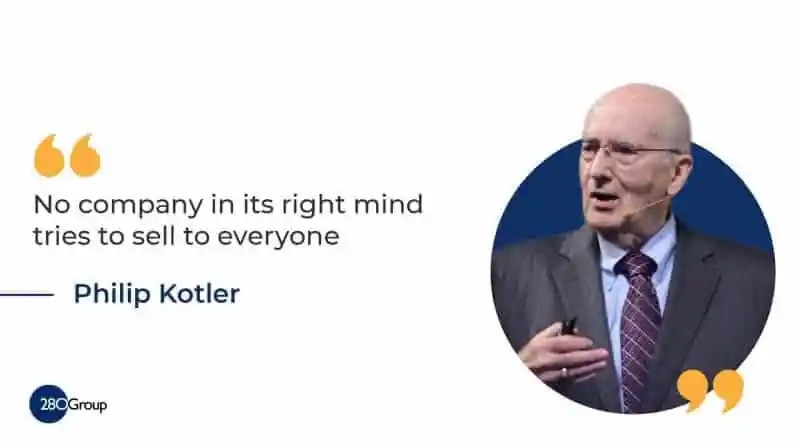
What is market segmentation? What is customer segmentation? Are they the same?
In business, market segmentation determines who is in your target market – and who is not. When utilizing market segmentation you look at all the people who could buy your product and decide how to break them up into groups that have similar needs, wants or demand characteristics. When you do this, you are able to communicate with different groups using different messages and marketing techniques.
What is Market Segmentation?
It’s common to get these confused because they are a similar. Although we write customer segmentation, it’s more useful to look at it as market segmentation. Most of our products aren’t sold to one customer. They are sold to a group of customers that act in a similar way. That’s why we use the term market segmentation.
In the section on how to create a positioning statement, the format starts with this term: (target customer). After seeing many versions of Product Manager’s positioning statements, it’s clear that many Product Managers aren’t very clear about who their target customer is at all.
Hint: “Corporate customer” is not a market segment. In order to position your product correctly in the marketplace you must develop your customer and market segments first.
What Makes Up Market Segmentation?
Market segmentation determines who is in your target market – and who is out. The simple answer is that you look at all the people who could buy your product and decide how to break them up into groups that have similar needs, wants or demand characteristics. When you do this, you are able to communicate with different groups using different messages and marketing techniques.
Why Develop Market Segmentation?
Market segmentation can save you a lot of time and effort. If you define who you are talking to, you also define who you are NOT talking to. As Philip Kotler so aptly said: “No one in their right mind tries to sell to everyone.” With extremely few exceptions, it’s hard enough to target the customers you really want to talk to and who really value the product or service you provide to them. Let’s agree that anything else wastes time and money.
Product Managers typically work with marketing teams to develop their market segmentation. They can use data from purchased surveys, their internal customer surveys, registration documents, website visits and any other data available to them. They then break down the details until they find natural groupings which form the starting point of their market segments.
Product Market Segmentation:

Who Develops Customer and Market Segmentation?
Product Managers typically work with Product Marketing Managers and marketing folks to develop their market segmentation. They can use data from purchased surveys, their internal customer surveys, registration documents, website visits and any other data available to them. They then break down the details until they find natural groupings. Chances are that you already do this instinctively. However, confirmation from data sources will make your segments clearer and your decision making easier.
What is Market Segmentation for Product Development
While much of the segmentation focuses on marketing to customers, segmentation is extremely useful for developing products. Instead of a market focus, here Product Managers often personalize the segment to create a customer persona. A persona is an archetype customer that developers can focus their efforts and imagination on. Personas often have names and even pictures associated with them.
Market Segmentation for Marketing
In most cases, customer and market segmentation focuses on marketing. Who do we talk to? We want to define the segment enough so that we can make marketing decisions using them.
A Simple Example of Market Segmentation
Let’s try a simple market segmentation example. Let’s use fast food. How about McDonalds? Let’s create a segmentation of two groups and see how the product and the marketing change the offering:
- Hungry teenagers
- Small children and the rest of their family
Teenagers
- Needs and/or wants – Be with their friends, Eat cheaply
- Goals and Motivation – Get food without having to deal with parents
- Buying behaviors or triggers – Teenagers are virtually always hungry
- Values and Attitudes – Cheap is better
- Lifestyle – On the go with friends
Small children (with family)
- Needs and/or wants – Want tasty food that they can hold themselves
- Goals and Motivation – Have eating be a fun experience
- Buying behaviors or triggers – Time is of the essence when faced with a hungry child
- Values and Attitudes – Like colorful areas, Believe marketing implicitly
- Lifestyle – Tagging along with their parents
McDonald’s hungry teenager offering
Product offering:
- A variety of large hamburgers at a variety of price points
- Drive through or sit in. You can still hang out with your friends in the booths
- Open late – sometimes all night
Marketing:
- Emphasizes groups of teens laughing and having fun.
- Talks about reasonable price points for certain products
McDonald’s small children and family offering
Product offering:
- The happy meal: colorful box, small portions, and a TOY!
- Drive through or sit in. It depends on what the family’s plans are.
Marketing:
- Ads on TV showing happy meals. A token apple slice bag shown to make sure it’s ‘healthy.’
- Kids laughing and giggling with friends or a quiet time with their parent
By creating market segmentation, a company is able to dissect what makes each type of customer happy and put all aspects of the product offering in place and then use marketing techniques to communicate why that market segment should buy their product.
So what different market segments are you talking to? Have you identified them and do you know which messages will make the difference when it comes to your product?


